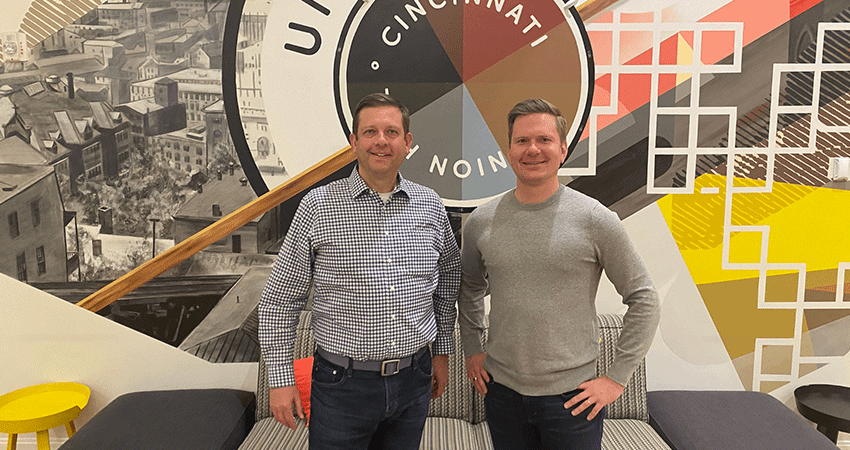Cincy Brands co-founders Andy Cipria (l) and Sean Lee (r)
Cincy Brands, a startup acquirer, is focused on measured growth in the “better for you” category of brands offering healthier, less chemical-intensive products, seeing itself as the opposite of mega-Amazon aggregators that grew massive in a hurry and have found themselves retrenching.
The founders are also leveraging their Cincinnati networks as former brand managers at Procter & Gamble, as well as executives at a startup agency supporting both Amazon sellers and aggregators, to develop a pipeline of targeted acquisition prospects.
Most recently, Cincy Brands made its second acquisition, earth-friendly cleaning products brand Sapadilla, from Canada-based Gorilla Glue. The latter will continue as a minority owner through the six-month transition. Its first acquisition was everyday essentials seller Vitabox in July 2022, five months after its founding. Ideally, the company is looking to add three to four brands a year.
Cincy Brands president and co-founder Sean Lee said he and partner Andy Cipra observed the aggregator arms race from the sidelines and decided they wanted to take a different tack. Instead of pursuing venture capital, the company is primarily funded by Wilbur Studios, a San Francisco-based startup incubator.
With venture funding of aggregators dropping off precipitously, firms are tweaking their strategies, according to Modern Retail.
“They were bringing in lots of VC dollars and had these really big debt facilities,” Lee said. “The nature of that is, they had a lot of pressure to set up large M&A teams and go acquire, 30, 40, 50 companies in a year. For us having just worked with some aggregators at (agency) Amify, we knew that operationally that’s very hard to integrate quickly. If you’re going that fast, you may make some missteps on what you’re acquiring.”
Lee said another aspect of Cincy Brands’ investment thesis was to not be dependent on Amazon-only brands for its success, which went against the operating model of many aggregators. Sapadilla is a good example, he said, with a mix of revenue from Amazon, DTC and retail, especially store chains in Canada like London Drugs. The company also exclusively seeks “better for you” targets, with strong appeal to many in the Gen Z and Millennials groups.
“In the beauty category that could be defined as clean and green with no animal products,” he said. “In the home care space, it’s products that are safe to use around people and pets with no harsh chemicals. It lines up with our demographics, how we operate in general, the products we use and our philosophies on consumer goods.”
The Cincinnati base also provides a strong local talent pool from the likes of CPGs Procter & Gamble and Uniliver as well as major grocer Kroger, and is an ideal spot for fulfillment to both coasts. Cincy Brands has an office staff of 11, plus 21 fulfillment workers supporting the brands in two 50,00-square-foot facilities, the first coming along with the Vitabox acquisition. The company also provides marketing and advertising support on marketplaces including Amazon.com and Walmart.com.
While the first two acquisitions were fairly turnkey, Lee said, Cincy Brands is open to various avenues. For instance, they could invest in but not acquire a brand, keeping the founder on as a salaried employee, or structure a typical 12-month earnout package as most aggregators do. “It really just depends on what the sellers are looking for,” he said.

